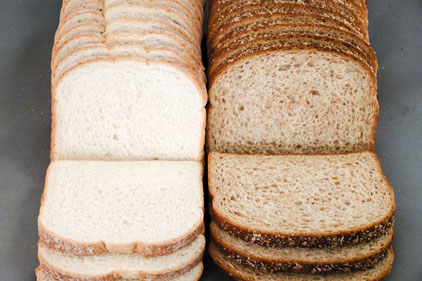The International Wheat Genome Sequencing Consortium (IWGSC), Bethesda, Md., published a draft sequence of the bread wheat genome in the international journal, Science.
Officials say the chromosome-based draft provides new insight into the structure, organization, and evolution of the large, complex genome of the world's most widely grown cereal crop. Experts agree the genetic blueprint is an invaluable resource to plant science researchers and breeders. For the first time, they have at their disposal a set of tools enabling them to rapidly locate specific genes on individual wheat chromosomes throughout the genome.
Jorge Dubcovsky, a professor at the University of California-Davis, says the results "have been a fantastic resource for our laboratory.”
“The development of genome specific primers, which used to take several weeks of work, can now be done in hours,” he adds. “Mapping of any sequence to the specific chromosome arm can now be done in silico in minutes. In addition to the acceleration of day to day work in wheat genetics, this resource has made possible analyses and discoveries at the genome level that were not possible before.”
Officials describe the draft sequence as “a major landmark” towards obtaining a complete reference sequence of the hexaploid bread wheat genome, the ultimate aim of the IWGSC. In the same issue of Science, another article presents the first reference sequence for the largest chromosome, 3B. This establishes a proof of concept and a template for sequencing the remaining chromosomes. As of today, researchers in the IWGSC estimate that the full genome sequence will be available within three years.
"With the draft gene sequence for each of the bread wheat chromosome and the first reference sequence of chromosome 3B, we have reached a great milestone in our roadmap," says Catherine Feuillet, IWGSC co-chair. "We know now the way forward to obtain a reference sequence for the 20 remaining chromosomes and we hopefully will be able to find the resources to achieve this in the next three years."
With a chromosome-based full sequence in hand, plant breeders say will have high quality tools at their disposal to accelerate breeding programs and to identify how genes control complex traits such as yield, grain quality, disease, pest resistance, or abiotic stress tolerance. They will be able to produce a new generation of wheat varieties with higher yields and improved sustainability to meet the demands of a growing world population in a changing environment.
The draft sequence is already providing new insights into the history and evolution of the wheat genome and genes involved in grain development, as exemplified in two additional publications appearing in the same issue of Science.
Wheat is a major dietary component for many populations across the world. Grown on more land than any other crop, more than 215 million hectares of wheat are harvested annually to generate a world production of almost 700 million tons, making it the third most produced cereal after maize and rice.
The IWGSC, with more than 1,000 members in 57 countries, is an international, collaborative consortium, established in 2005 by a group of wheat growers, plant scientists, and public and private breeders. The goal of the IWGSC is to make a high quality genome sequence of bread wheat publicly available, in order to lay a foundation for basic research that will enable breeders to develop improved varieties. Visit www.wheatgenome.org for more information.
